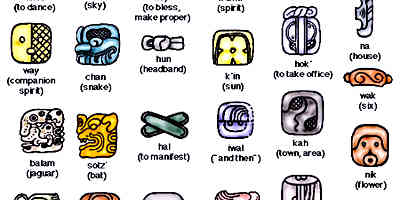The Maya developed an intricate calendar system that was highly accurate. They had multiple calendars, including the Long Count, which measured long intervals of time, and the Tzolk’in and Haab calendars, which tracked the sacred and solar years.
This precise calendar system showcased their advanced knowledge of mathematics and astronomy.
The Maya built awe-inspiring cities that still captivate modern visitors. Prominent among them are Tikal, with its towering temples and palaces emerging from the rainforest, and Chichen Itza, renowned for the magnificent El Castillo pyramid. These urban centers served as political, religious, and cultural hubs for the Maya civilization.

“The Maya civilization represents one of the most sophisticated and intellectually advanced cultures of the ancient world. Their achievements in architecture, mathematics, astronomy, and writing are a testament to their ingenuity and intellectual prowess.”
Dr. Linda Schele, Maya scholar and art historian.
The Maya had a complex writing system consisting of hieroglyphs. For many years, this script remained undeciphered until significant progress was made in the 20th century. Maya inscriptions provide invaluable information about their history, mythology, and royal lineages, offering a glimpse into their rich culture.

The Maya made significant contributions to mathematics. They developed a base-20 numeral system and were one of the first civilizations to use zero as a placeholder. This positional numbering system allowed for advanced calculations and precise measurements in their architectural and astronomical endeavors.
The Maya successfully cultivated crops in challenging environments. They ingeniously designed terraces and irrigation systems to maximize agricultural output. By using techniques such as slash-and-burn agriculture and constructing canals, they transformed the landscape to support their growing population.
“The Maya civilization had a profound understanding of the natural world, which is reflected in their intricate calendar system and architectural marvels. Their ability to adapt to diverse environments and develop complex social and political structures is a testament to their resilience and cultural achievements.”
Dr. David Stuart, renowned Maya epigrapher and archaeologist.
Religion played a central role in Maya society. They worshipped a pantheon of gods and believed in cosmic cycles and the interconnectedness of the spiritual and physical worlds. Maya rituals involved bloodletting, human sacrifice, and ball games, all aimed at maintaining harmony and appeasing the gods.

Maya art and sculpture are renowned for their intricate beauty and attention to detail. They produced magnificent stone carvings, elaborate murals, and vibrant pottery. Artistic motifs often depicted deities, mythological scenes, and aspects of daily life, providing invaluable insights into Maya culture.
The Maya had a sophisticated trade network that spanned vast distances. They exchanged goods such as jade, obsidian, cacao, feathers, and textiles through well-established trade routes. This commerce not only facilitated economic exchange but also promoted cultural interaction and the spread of ideas.
Maya society was hierarchical and structured. At the top were powerful rulers who governed city-states, supported by a noble class. Skilled artisans, traders, and farmers formed the middle class, while slaves occupied the lowest rung. This social structure fostered specialization and contributed to the development of Maya civilization.
One of the greatest mysteries surrounding the Maya civilization is its decline. Around the 9th century CE, many cities were abandoned, and the once-thriving civilization declined. The reasons for this collapse remain debated among scholars, with factors such as environmental degradation, warfare, and socio-political unrest being proposed as possible causes.
The Maya civilization’s architectural achievements continue to inspire awe and admiration. From the towering pyramids of Tikal and Chichen Itza to the intricate carvings of Palenque and the vibrant murals of Bonampak, each Maya building tells a story of a remarkable civilization.
These architectural marvels not only showcase the Maya’s engineering skills but also offer glimpses into their religious beliefs, artistic expressions, and cultural practices. Exploring these renowned Maya buildings allows us to immerse ourselves in their rich history and appreciate the enduring legacy of a civilization that left an indelible mark on the world.
“The Ancient Maya” by Robert J. Sharer and Loa P. Traxler
This comprehensive textbook offers an in-depth examination of Maya history, culture, art, architecture, writing, and social organization. It provides a comprehensive overview of the Maya civilization, making it an essential read for those seeking a comprehensive understanding.
“Breaking the Maya Code” by Michael D. Coe
In this engaging book, Michael Coe takes readers on a captivating journey through the history of deciphering Maya hieroglyphs. It explores the remarkable efforts of linguists, archaeologists, and epigraphers who worked tirelessly to unravel the mysteries of the Maya writing system.
“The Maya” by Michael D. Coe and Stephen Houston
This accessible and beautifully illustrated book provides a concise introduction to the Maya civilization. It covers the major aspects of Maya life, including their social organization, religious beliefs, art, and architecture, offering readers a solid foundation in understanding this ancient culture.
“Ancient Maya: The Rise and Fall of a Rainforest Civilization” by Arthur Demarest
Demarest provides a comprehensive exploration of the rise and fall of the Maya civilization, discussing the complex factors that shaped its development and eventual decline. This book combines archaeological research, historical analysis, and anthropological insights to present a nuanced account of Maya history.
“The Maya World: Yucatec Culture and Society, 1550-1850” by Matthew Restall
Focusing on the post-classic period, Restall delves into the social, cultural, and political dynamics of Maya society in the Yucatán region. This book sheds light on the transformations that occurred during the colonial era, providing a deeper understanding of the complexities of Maya civilization.
These five books offer varying perspectives and levels of detail, catering to both casual readers and enthusiasts seeking a deeper understanding of the fascinating Maya civilization.